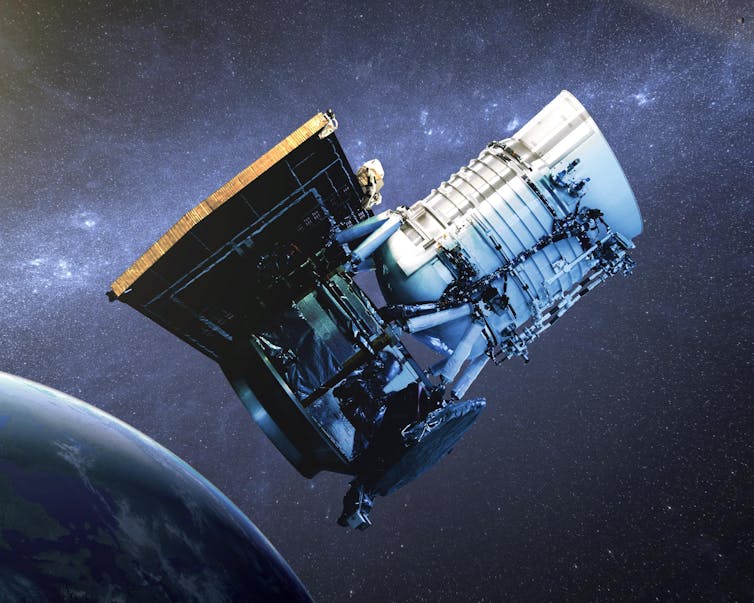The NASA project NEOWISE, which has given astronomers a detailed view of near-Earth objects – some of which could strike the Earth – ended its mission and burned on reentering the atmosphere after over a decade.
On a clear night, the sky is full of bright objects – from stars, large planets and galaxies to tiny asteroids flying near Earth. These asteroids are commonly known as near-Earth objects, and they come in a wide variety of sizes. Some are tens of kilometers across or larger, while others are only tens of meters or smaller.
On occasion, near-Earth objects smash into Earth at a high speed – roughly 10 miles per second (16 kilometers per second) or faster. That’s about 15 times as fast as a rifle’s muzzle speed. An impact at that speed can easily damage the planet’s surface and anything on it.
Impacts from large near-Earth objects are generally rare over a typical human lifetime. But they’re more frequent on a geological timescale of millions to billions of years. The best example may be a 6-mile-wide (10-kilometer-wide) asteroid that crashed into Earth, killed the dinosaurs and created Chicxulub crater about 65 million years ago.
Smaller impacts are very common on Earth, as there are more small near-Earth objects. An international community effort called planetary defense protects humans from these space intruders by cataloging and monitoring as many near-Earth objects as possible, including those closely approaching Earth. Researchers call the near-Earth objects that could collide with the surface potentially hazardous objects.
NASA began its NEOWISE mission in December 2013. This mission’s primary focus was to use the space telescope from the Wide-field Infrared Survey Explorer to closely detect and characterize near-Earth objects such as asteroids and comets.
NEOWISE contributed to planetary defense efforts with its research to catalog near-Earth objects. Over the past decade, it helped planetary defenders like us and our colleagues study near-Earth objects.

NASA’s NEOWISE mission, the spacecraft for which is shown here, surveyed for near-Earth objects.
NASA/JPL-Caltech
Detecting near-Earth objects
NEOWISE was a game-changing mission, as it revolutionized how to survey near-Earth objects.
The NEOWISE mission continued to use the spacecraft from NASA’s WISE mission, which ran from late 2009 to 2011 and conducted an all-sky infrared survey to detect not only near-Earth objects but also distant objects such as galaxies.
The spacecraft orbited Earth from north to south, passing over the poles, and it was in a Sun-synchronous orbit, where it could see the Sun in the same direction over time. This position allowed it to scan all of the sky efficiently.
The spacecraft could survey astronomical and planetary objects by detecting the signatures they emitted in the mid-infrared range.
Humans’ eyes can sense visible light, which is electromagnetic radiation…



